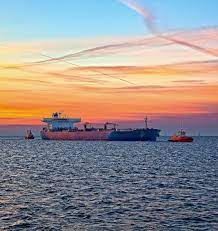As Europe’s top supplier of Liquefied Natural Gas (LNG), the United States has been the main beneficiary of the pivot by utilities to replace sharply lower Russian pipeline gas supplies with imports from other origins and in the form of LNG.
But following the European Union deal on Wednesday to place methane limits on Europe’s oil and gas imports from 2030, U.S. LNG shippers will be anxious that their lucrative European market may be at risk due to the enduring high levels of methane emissions throughout the U.S. natural gas supply chain.
Methane is the primary component of natural gas and is a far more potent Greenhouse Gas than carbon dioxide in terms of climate-warming potential over the near term, according to the Natural Resources Defense Council, a U.S.-based nonprofit.
In 2022, U.S. exporters sold $33 billion of LNG to European buyers, over triple the value sold to Europe in 2021 before the Russia-Ukraine war severed pipeline flows to Europe last year, U.S. Energy Information Administration (EIA) data showed.
U.S. LNG exports to Europe remain strong in 2023, valued at around $14 billion through August, with Europe accounting for two-thirds of all U.S. LNG exports.
However, as part of efforts to reduce overall emissions and measure pollution from their own energy suppliers, European Union member states have agreed to impose maximum methane intensity values on all producers sending fuels to Europe.
That means U.S. LNG suppliers will be at risk of losing sales to Europe if the methane intensity of the gas contained in their shipments fails to meet the standards the EU will set.
HEAVY FOOTPRINT
The United States oil and gas industry is the largest source of methane in the country, emitting 12,297 kilotons (Kt) of methane in 2021 and ranking second behind Russia (14,866 Kt), according to the International Energy Agency’s methane tracker.
However, in terms of methane intensity, or a measure of how much methane is emitted in the production of oil and gas, the United States ranks 10th, emitting 8.18 tonnes of methane per kiloton of oil energy equivalent (ktoe).
That U.S. intensity rating compares favourably to Venezuela’s 53.35 tonnes of methane per ktoe and is 42% less than Russia’s 14 tonnes of methane per ktoe.
However, the U.S. reading compares less well to Canada (5.17 tonnes of methane/ktoe) and Saudi Arabia (4.9 tonnes) and so indicates that the U.S. oil and gas sector has scope for emissions improvement among major oil and gas producers.
What’s more, it is unclear where EU lawmakers will draw the line in terms of what methane intensity levels are acceptable, and if they plan to adjust thresholds over time.
Given the importance of the gas-fired industry across Europe, it is unlikely that policymakers will impose such harsh standards that may limit volumes from key suppliers and potentially impact local power markets.
But given the rapid pace of renewable energy capacity expansions across Europe, and the region’s commitment to phase out most fossil fuel use altogether by mid-century, it is possible that Europe’s total gas needs will substantially decline by when the new standards are set to kick in.
That in turn means policymakers may feel entitled to set high standards in terms of the emissions profile of importable fuels, especially for products with multiple potential sources of emission leakage such as in gas pipelines, storage tanks, liquefaction plants, LNG tankers and regasification units.
In addition, and regardless of the final EU decision, it is in the interests of all U.S. oil and gas producers to drastically reduce emissions associated with their operations, as even domestic consumers are demanding increasingly clean sources of energy.
That means that if natural gas is to remain a key component in local electricity generation mixes, and a valuable export in the form of LNG, the entire supply chain for U.S. gas and LNG must get cleaner, and fast.
Source: Hellenic Shipping News





